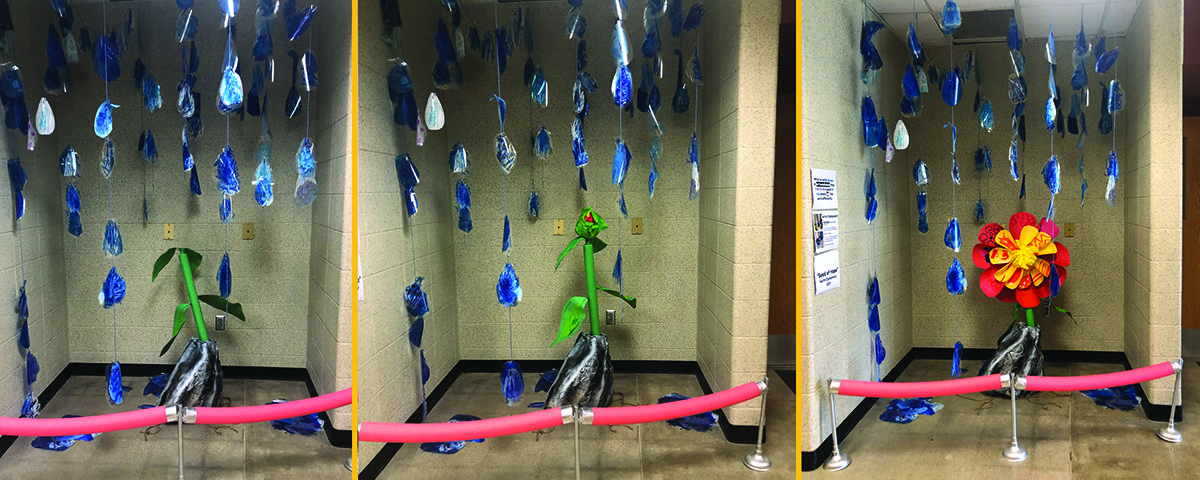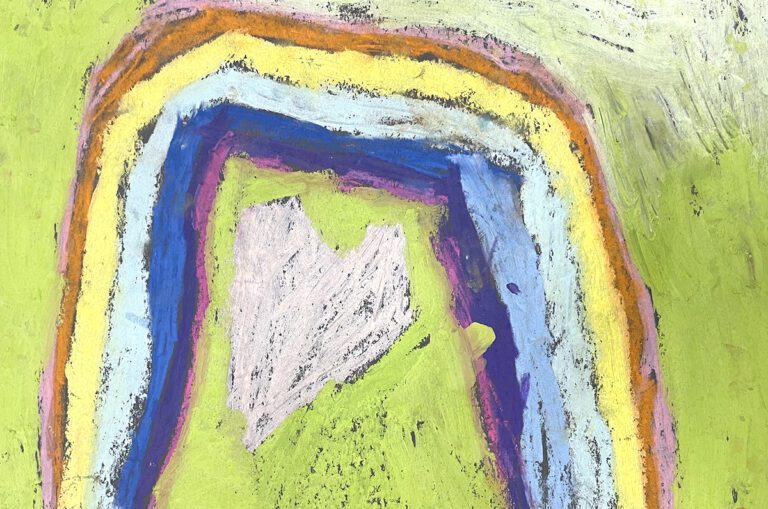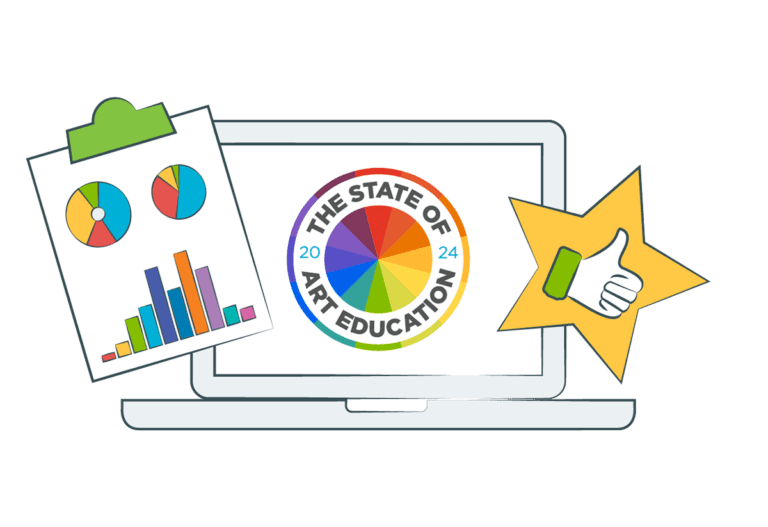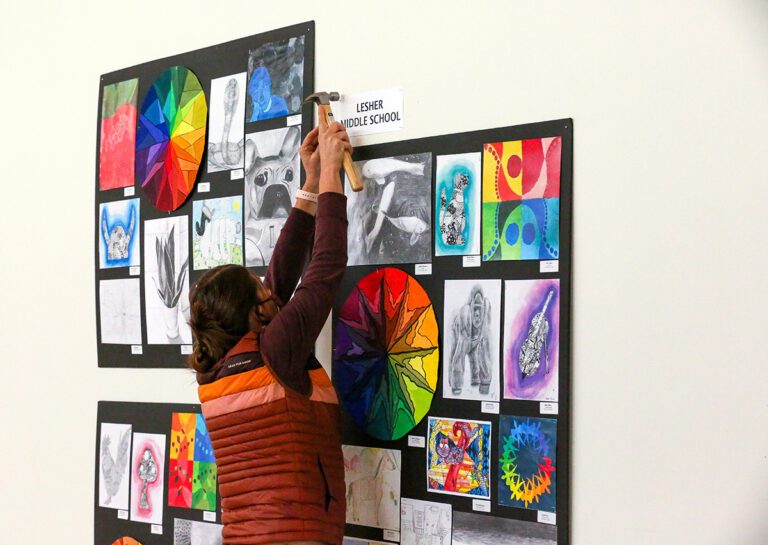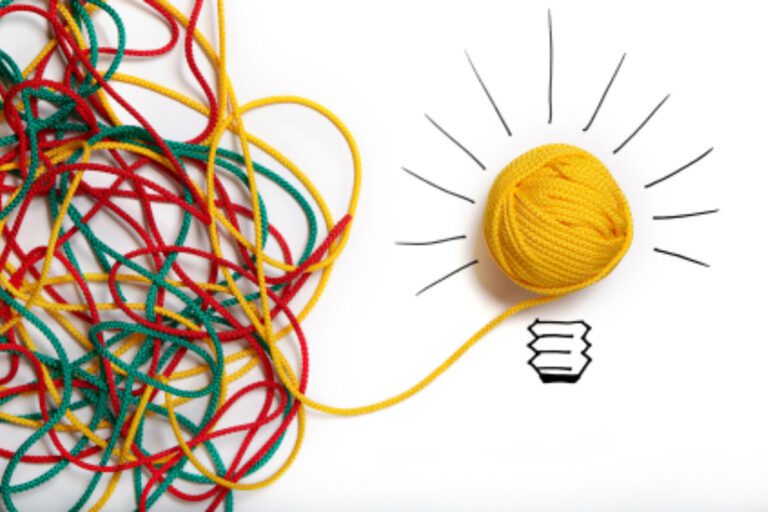A lot has happened in our world and country over the past couple of years. We have endured a global pandemic and isolation, loss and grief, politically and racially charged events, and so much more. We are in a time of information overload and we are overwhelmed and depleted. Students are very perceptive and even our littlest ones are no exception. Our elementary students are not completely immune or oblivious to what is going on. Starting from toddlerhood, even if they don’t know the details, they can sense unrest and sadness.
Adults and young artists alike have experienced complicated feelings. Emotions like frustration, disappointment, and hope have been common. But, art provides creative opportunities. Through art, students can identify their feelings and process their experiences. School-wide installations are a great art form to support students as they wrestle with all their emotions. According to The Amherst Public Art Commission, installations can provide the following benefits:
- Brings the whole school community together
- Enriches surroundings
- Provides access for all to enjoy and take part in the process
- Shows students that the school supports the arts
- Improves morale
- Teaches respect and stewardship for the environment
Katie Pourcho is an elementary art teacher in Danville, IN. She works with 560 students that range from preschool through second grade. During the pandemic, her young students faced a lot of changes. But, the students in Danville also found themselves in the midst of a school renovation. They saw the removal and slow replacement of their playground. Though these experiences are specific to this particular school context, disappointment is a real part of all our lives. Katie dreamed up an installation with a fellow art educator to support her students. She called it The Seed of Hope.
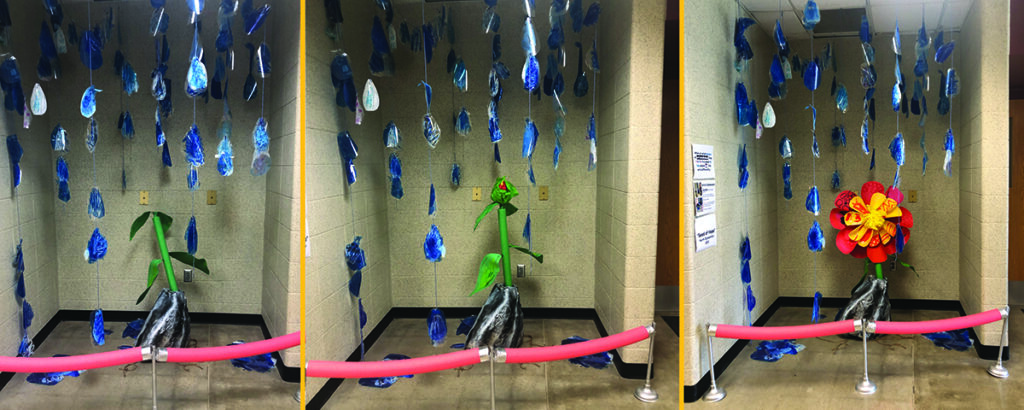
Let’s take a look at the installation and how it just might be what you and your students need as well.
Communication is key.
School-wide projects centering on complicated feelings deserve special attention. Consider ongoing communication with families, school staff, and professional counselors. Early conversations with other adults in the school community may reveal challenges you haven’t thought of. It might also raise questions you need to process and resolve before getting started.
Katie reflects on her initial discussion with the school staff. She said, “At first, a few teachers in my building were a bit wary. They feared that our students’ hearts were too tender to acknowledge the hardships of this year. In some ways, they weren’t wrong.” Katie got her professional school counselor involved in the creation of the discussion topics. They were also on call if extra support was needed.
And more importantly, students’ lives extend beyond the art room and the physical school building. Provide caregivers with information as the installation progresses. This can spark meaningful conversations about the learning and process at home.
Introduce disappointment and frustration through diversity.
This is a unique installation that should start with intentional discussions. Consider discussing how diverse artists and cultures respond to sadness and hope. Katie reflects, “My students saw images of how diverse cultures visually show they are sad or are waiting in hope. We look at architectural sites like the Wailing Wall, floral arrangements collected after traumatic events like the 2016 attack in Nice, and traditional funeral clothing from around the world.” In tandem, students study artists who create installations out of collections of objects. Viewing work by artists such as Berenice Rarig, Ai Weiwei, and Yoko Ono show how participating in an installation supports building connections and valuing new perspectives.
As mentioned above, communication is essential. You should set clear boundaries during class discussions. Some topics may hit on vulnerable areas. Short class periods at the elementary level do not always provide protected space. Consider finding options outside of the school setting. Katie reflects, “During introductions, I spoke in measured words and kept a careful watch on my students. I partner with my school counselors. They helped me prep my dialogue and are ready if any students need more reflection time.”
Construct raindrops from recycled laminator film that represent washing away disappointment.
Students consider their own frustrations and disappointment centered on their school experience. Items like hand sanitizer, itchy masks, and quarantined friends create frustrations. Cut raindrops out of the left-over film from the laminator. Adorn with visual representations of these frustrations in permanent marker. “Wash away” the drawings with broad blue color from paint sticks.
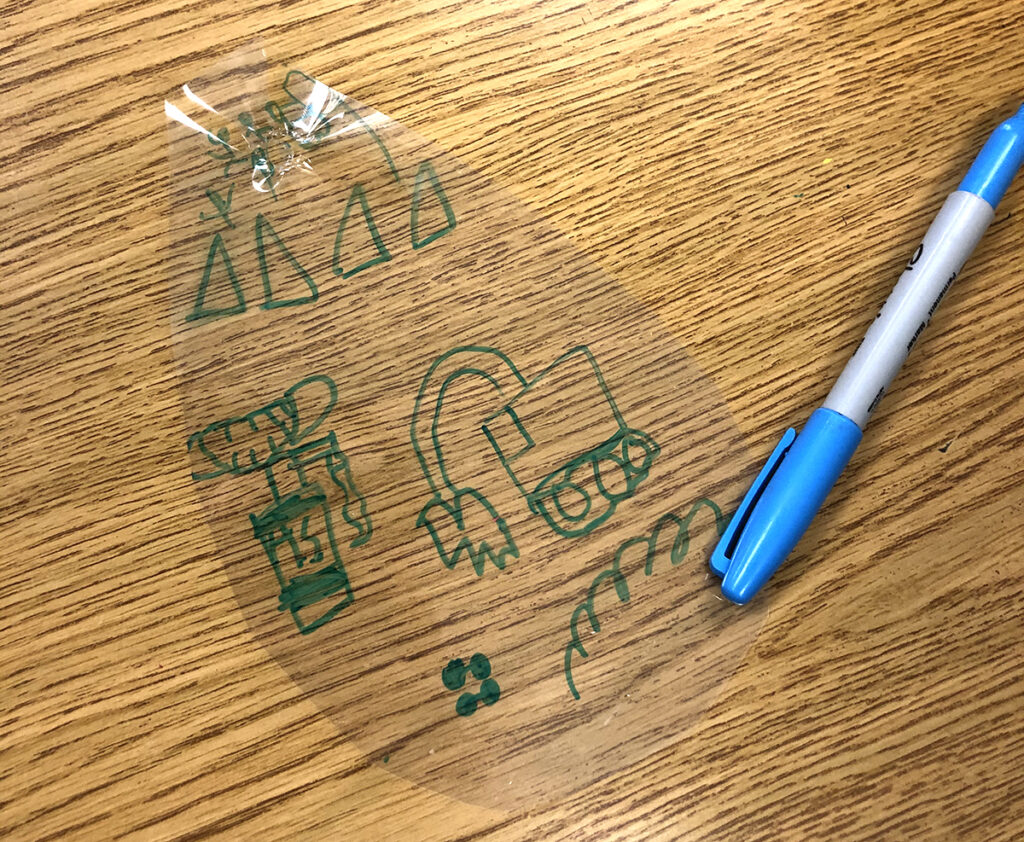
Hang the completed drops from the ceiling in an unused space in the school. Have some drops cascade down from the ceiling and some form pools of water on the floor.
There is a lot to learn from disappointment. One of those being that it can fuel hope. In this installation, the blue raindrops fuel the growth of a seed. Let’s take a look at the seed next.
Create a collaborative paper-mâché seed to represent the beginning of new possibilities.
Identifying the stressors and disappointment in our lives is a good starting point. But, we must also understand hope. Hope is a longing for something to occur. It also acknowledges that what we desire may never come true. This last part is key. Our hopes may come true with some delay. Much like watching a school playground be rebuilt, we must have patience.
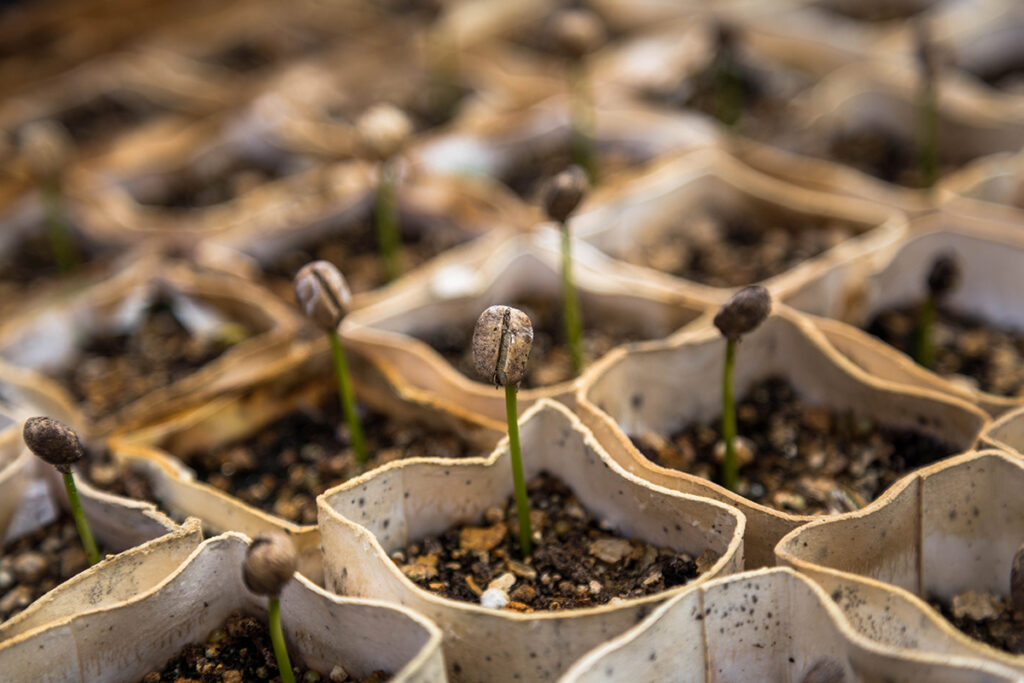
Students work together to create a giant hollow paper-mâché seed. This is placed under the drops of disappointment.
Students draw images of school things they are hopeful about on construction paper seeds. Of course, a few students may go off-topic and draw images of a new bike or beach vacation they are dreaming of. But, the goal is to focus students on their school experiences.
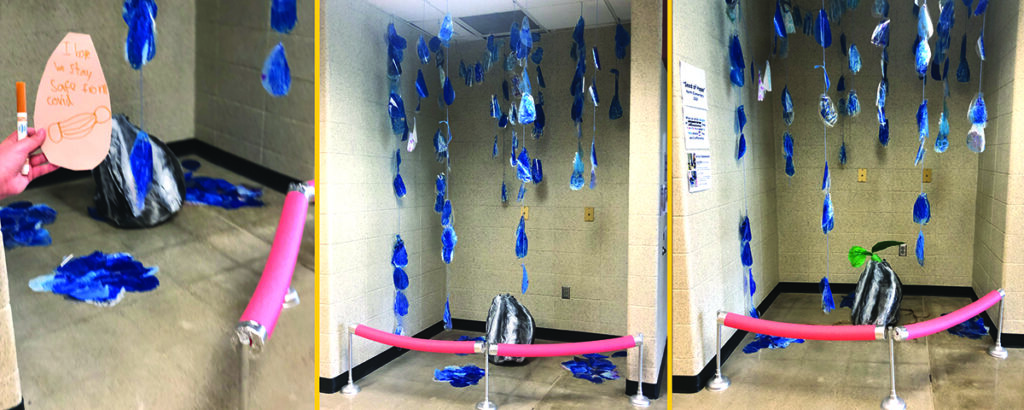
Students carry their construction paper seeds down the hall to the giant seed. Hold a ceremony for The Seed of Hope. As each student places their paper seed within the paper-mâché form, the class rubs their hands together and makes “misty” sounds. The class ceremony concludes with everyone speaking in unison, “During hard times, we support each other. When we are hoping, we wait together.” With the seeds all tucked into the great Seed of Hope, prompt a class discussion. Introduce the possibility that the seed may take a long time to grow. This is much like the idea of hope. We hope that something magical will happen, but it may take a long time to come to fruition. This is true about the hope we experience in our daily lives and is a reminder for us, the adults, as well.
Watch the seed sprout to represent hope and growth.
Slowly reveal a sprout from the seed using a green pool noodle. Each week, the students and staff will watch the sprout unfurl, grow leaves, and form a bud. Students will be enthusiastic about the growing plant. They will continue to gather around the installation to check on the magical progress. Eventually, a beautiful tissue paper flower will unfurl!
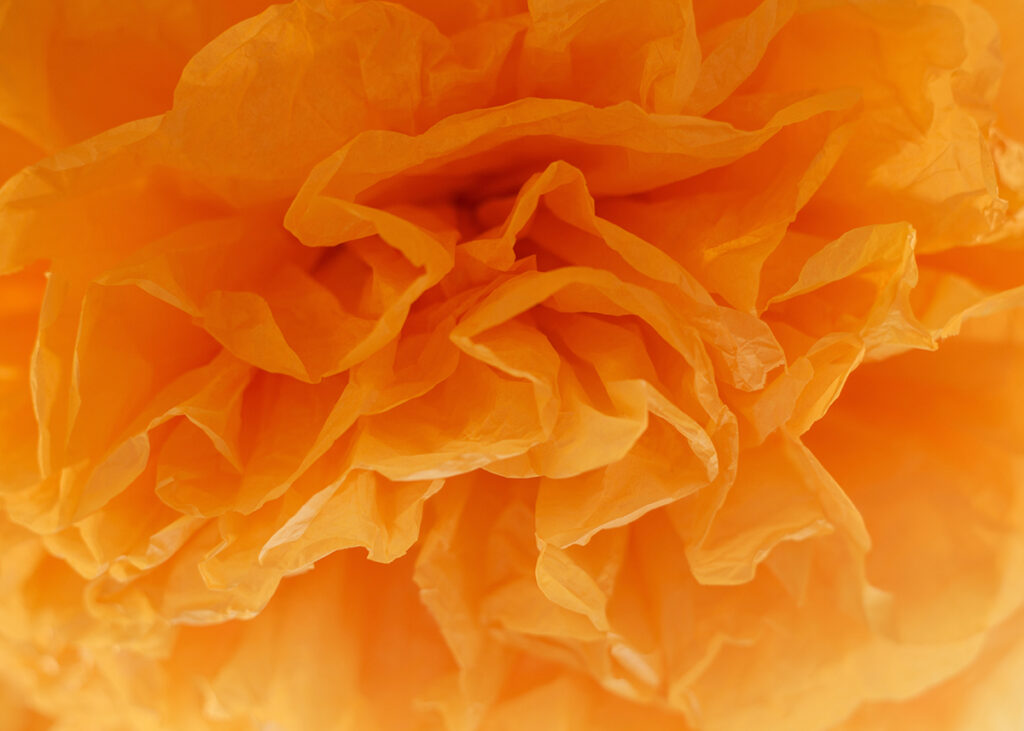
Even teachers brim with anticipation and excitement over the growing flower. Katie reminisced, “One staff member even grabbed my elbow to lean in close. With tears in her eyes, she remarked on how healing this was for the school.”
How do we continue to grow?
Be sure to not repeat the seed installation with a short timeframe. If you do this, student’s enthusiasm might wane. But, this does not mean that the conversations have to stop. Teachers can continue to reference the learning, process, and result of the experience with their students. Katie shares, “I want my students to learn it’s okay to be sad. It’s okay to be frustrated. I wanted my students to see that when things get tough, they are not alone. And while there are some things we can’t control, we do have the power to change our perspective.”
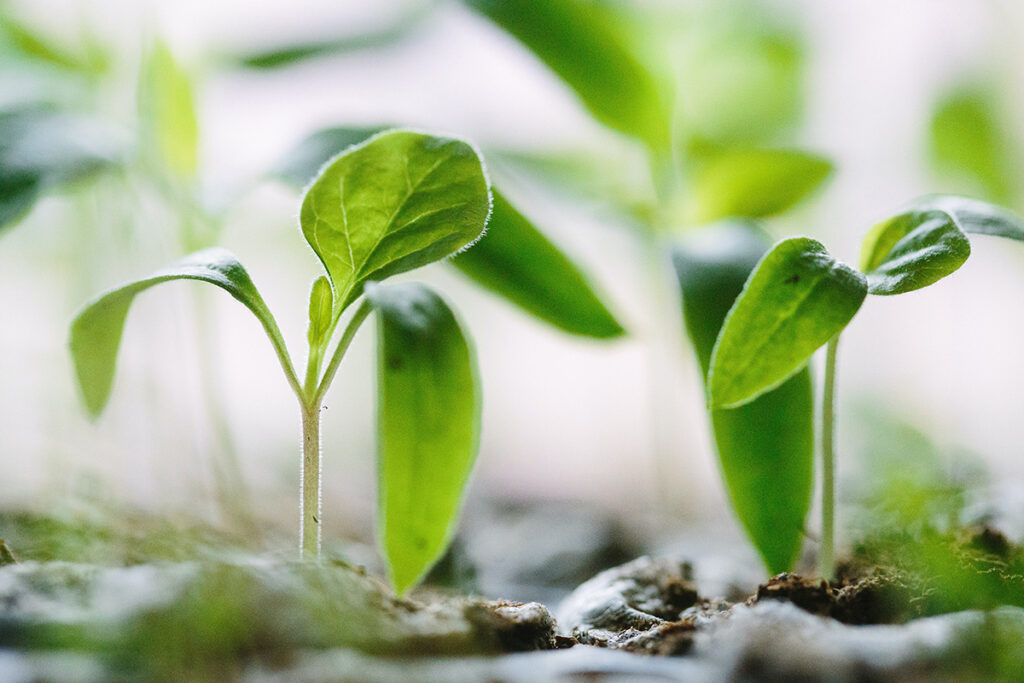
We will support our students through everyday struggles this year. Consider creating an art installation like The Seed of Hope. This installation can validate the tough stuff our youngest students are going through. It can also help them to process all their feelings in a constructive and creative manner. The art room is an ideal space for students to learn and grow onward, as they discover what it means to be human.
To hear more about The Seed of Hope project, check out The Art of SEL podcast.
When it comes to the past school year, what areas of disappointment have you had to process? What are you hoping for?
How can you use an art installation to support student experiences this year?
Who are the stakeholders in your school that need to be a part of the brainstorming and communication of a large-scale art project?
Magazine articles and podcasts are opinions of professional education contributors and do not necessarily represent the position of the Art of Education University (AOEU) or its academic offerings. Contributors use terms in the way they are most often talked about in the scope of their educational experiences.
